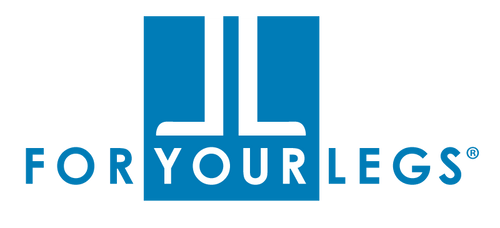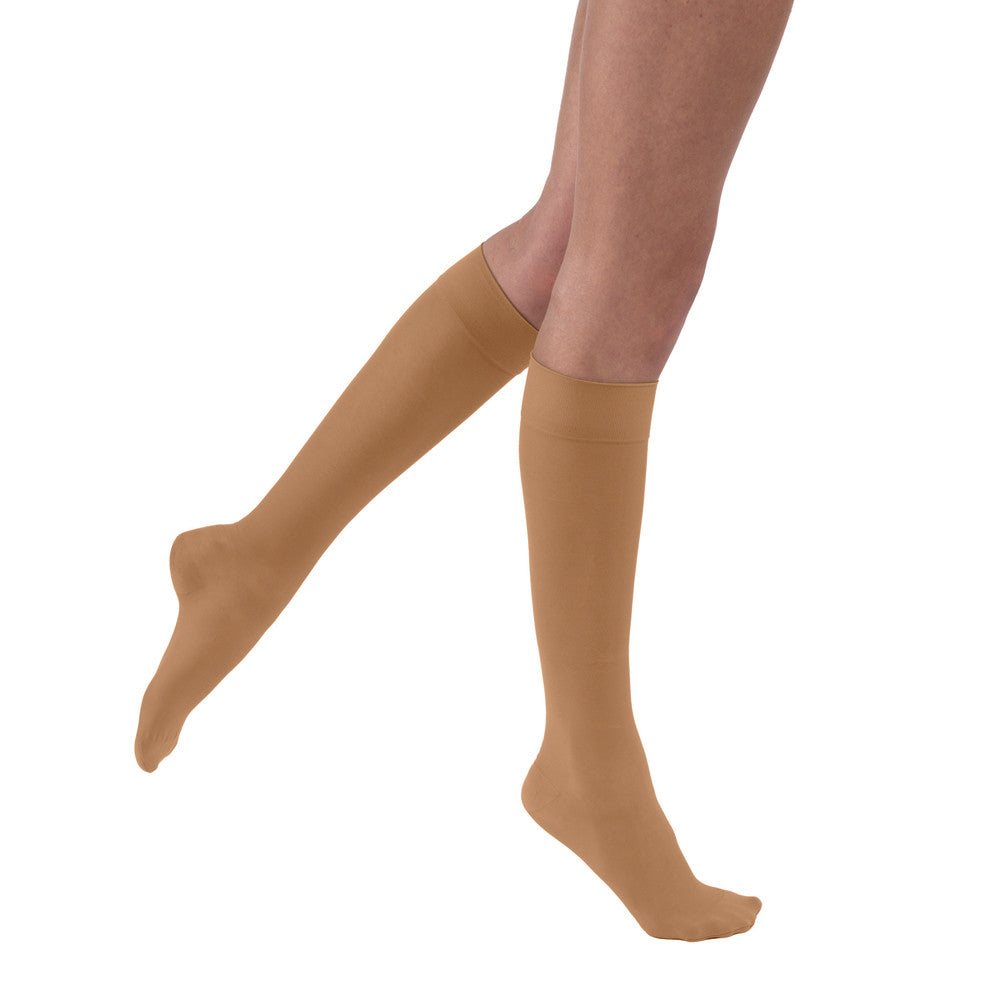Compression Therapy Guide
Circulation
Circulation is the movement of blood through the vessels of the body that is triggered by the heart. This process distributes nutrients and oxygen to and removes waste products from all parts of the body.
What is compression therapy?
Compression therapy means wearing compression garments such as socks, stockings, sleeves, and pantyhose, which are designed to support your veins and increase circulation in your legs. Compression garments are typically worn by patients during the day only. They assist in the overall circulation of the legs, reduce swelling, and prevent blood from pooling in the legs and feet.
How does compression therapy work?
Compression therapy is the application of graduated compression garments to aid and control leg swelling and discomfort, and improve the symptoms of various conditions. Graduated compression means the strongest support/pressure starts at the ankles and gradually decreases towards the top of the garment. This gradual support helps with circulation by improving the pumping actions of calf muscles.
Anti-embolism/T.E.D. stockings
Anti-embolism stockings, also called T.E.D. stockings, are designed to reduce the risk of deep vein thrombosis (DVT), or blood clots, and are used for immobile patients that are bedridden. T.E.D. compression is not graduated, it is at the same level throughout the garment.
Varicose veins
Varicose veins are twisted, enlarged veins located near or raised above the surface of the skin. Varicose veins are often dark blue in color, and are most commonly seen on the legs, but they can occur anywhere on the body. These veins connect with the deep veins of the leg and play a minor role in the transfer of blood to the heart.
What is venous insufficiency?
Veins have valves that keep blood moving towards the heart. Venous insufficiency, or chronic venous insufficiency, is a condition where the blood flow through the veins isn’t working correctly, which causes blood to pool in the legs. This improper functioning of vein valves in the legs causes swelling and skin changes. This can lead to problems that include varicose veins.
What is sclerotherapy?
Sclerotherapy is a common treatment for varicose veins and spider veins. A tiny needle is used to inject the veins with a salt solution (sclerosant) that irritates the lining of the vein. This forces blood to reroute through healthier veins. In response, the veins collapse and are reabsorbed.
What is lymphedema?
Lymphedema is the chronic swelling that happens when the lymph is not moving properly.
There are two types of lymphedema:
- Primary lymphedema is due to a developmental defect (malformation dysplasia) of the lymph vessels and/or lymph nodes. This can be congenital or hereditary.
- Secondary lymphedema is caused by an insult to the lymphatic system and can appear at any age. Some causes of secondary lymphedema include: surgery/radiation for cancer, malignant tumors, trauma, infection, chronic venous insufficiency, obesity, self-induced, or filariasis.
What is economy class syndrome?
Economy class syndrome, often associated with deep vein thrombosis (DVT), is a term used to describe the leg symptoms (typically blood clots) experienced by frequent air travelers on long trips.
Blood clots
Blood clots are clumps that occur when blood hardens inside the veins and/ or arteries.


